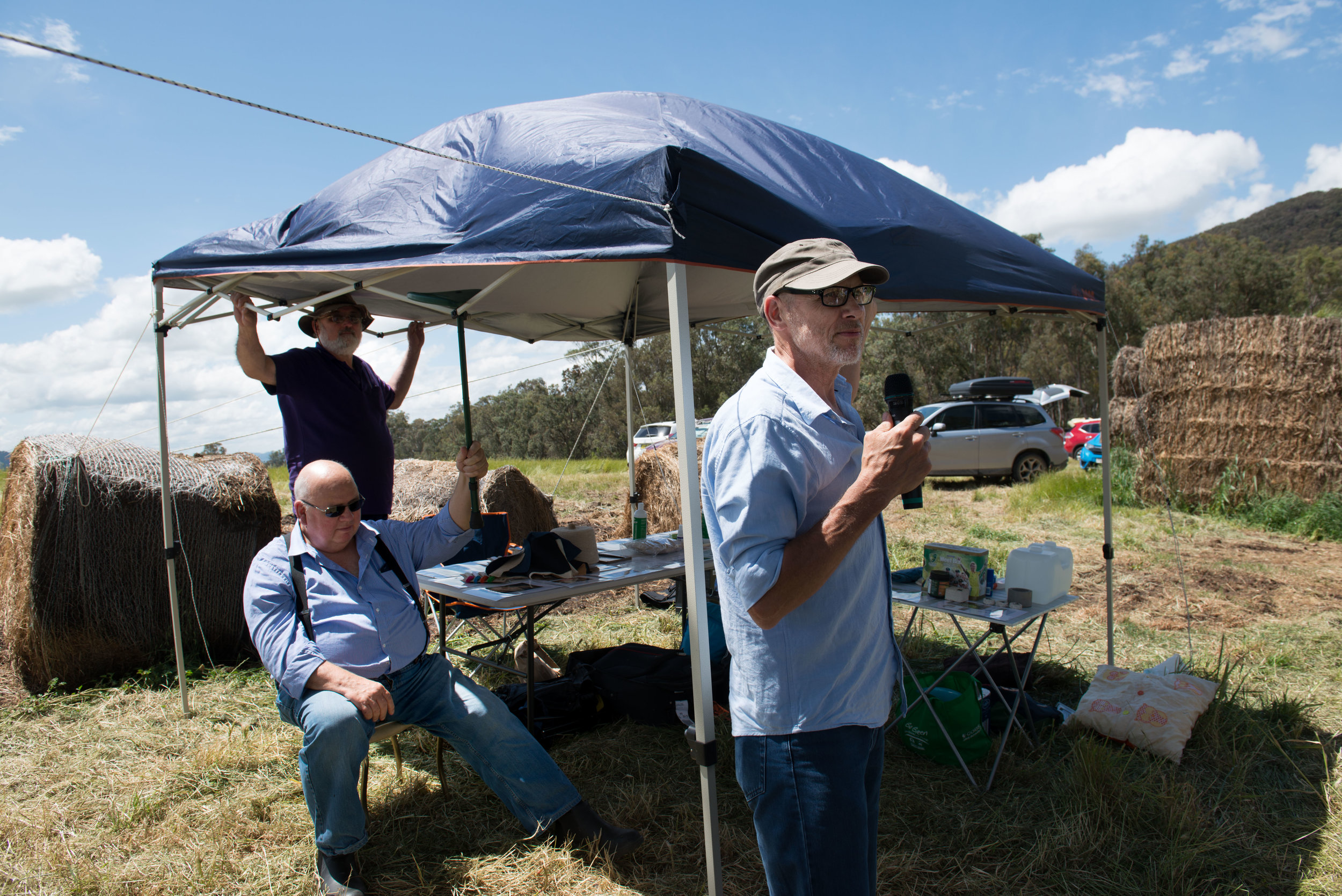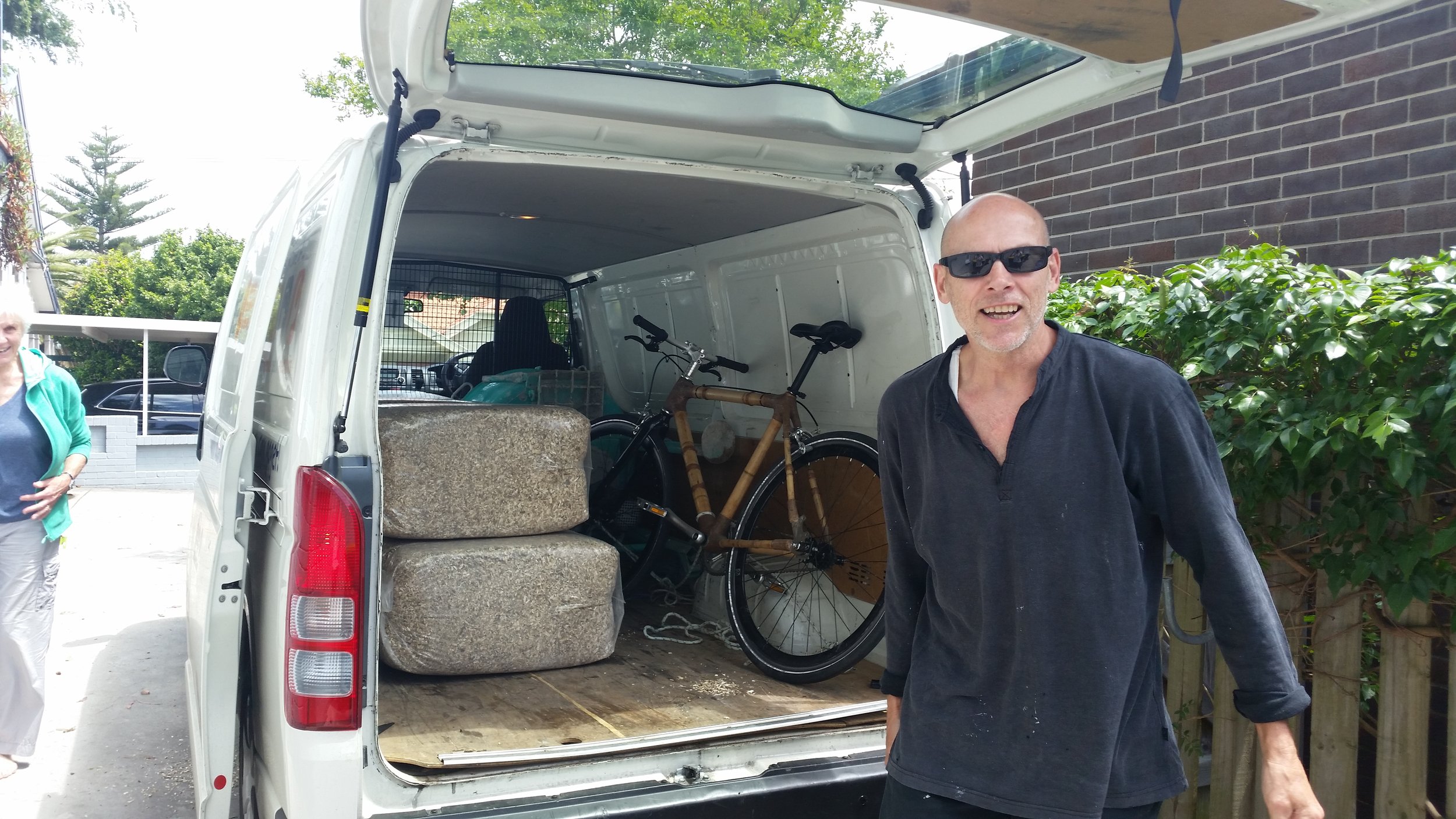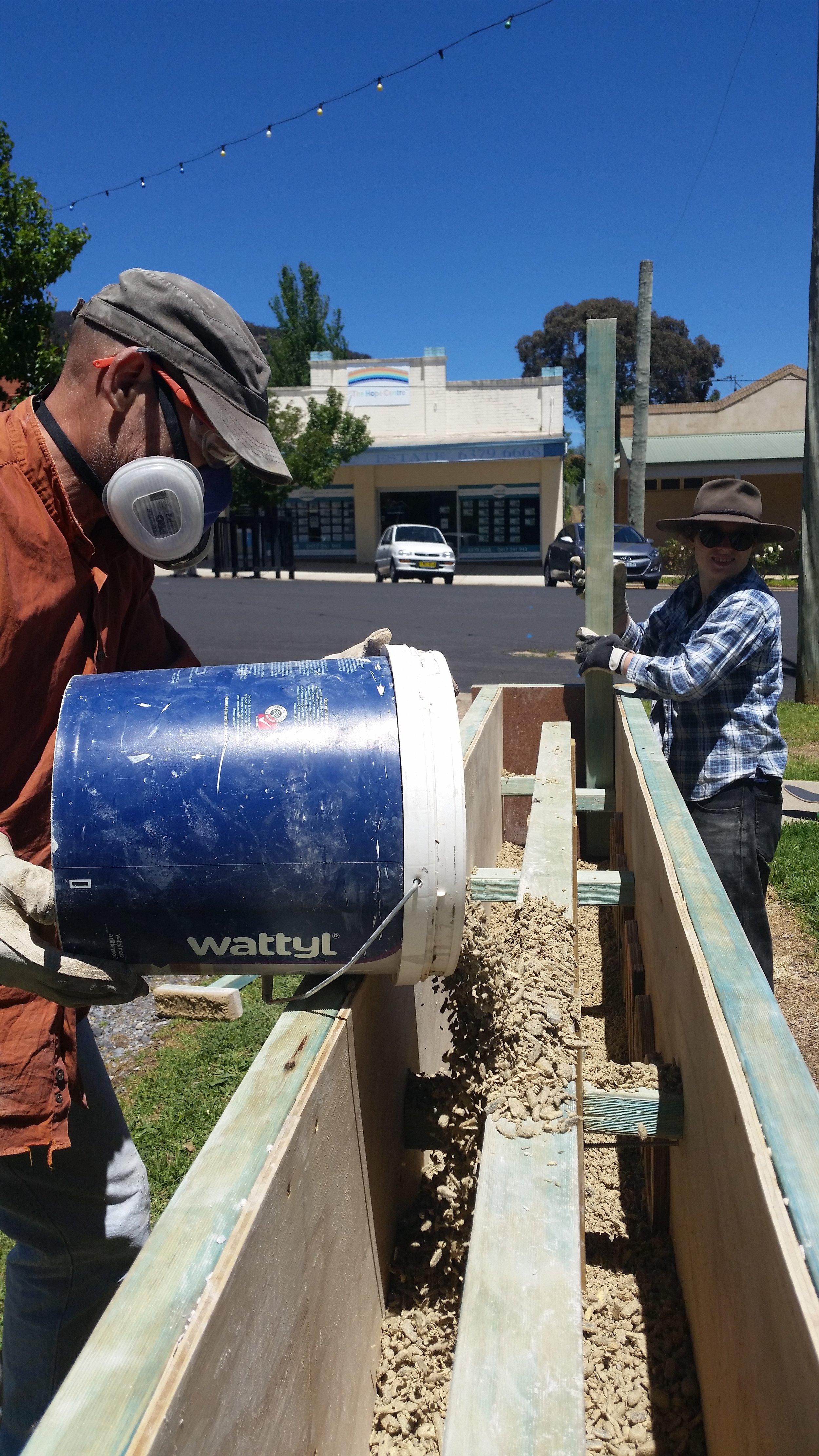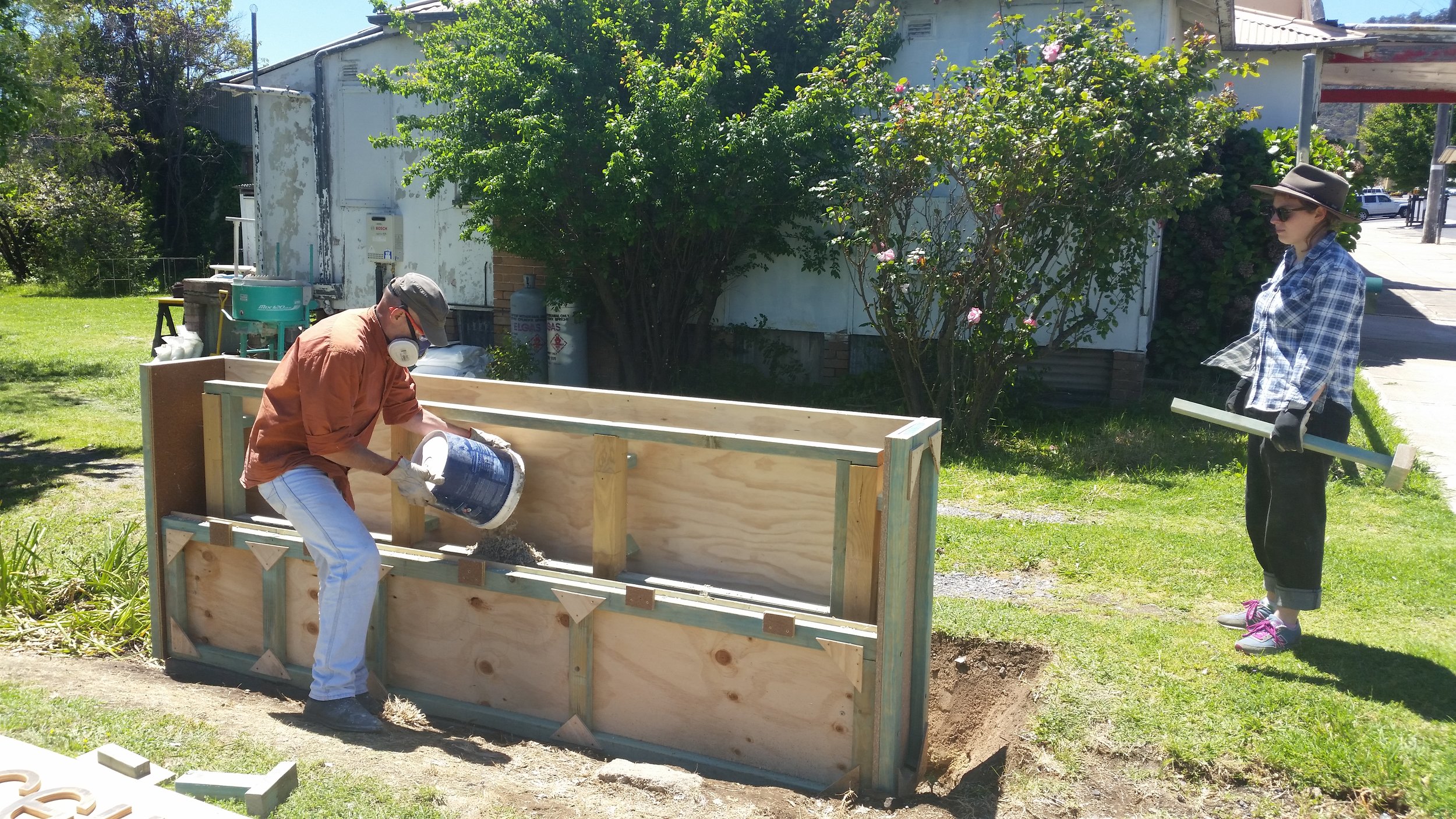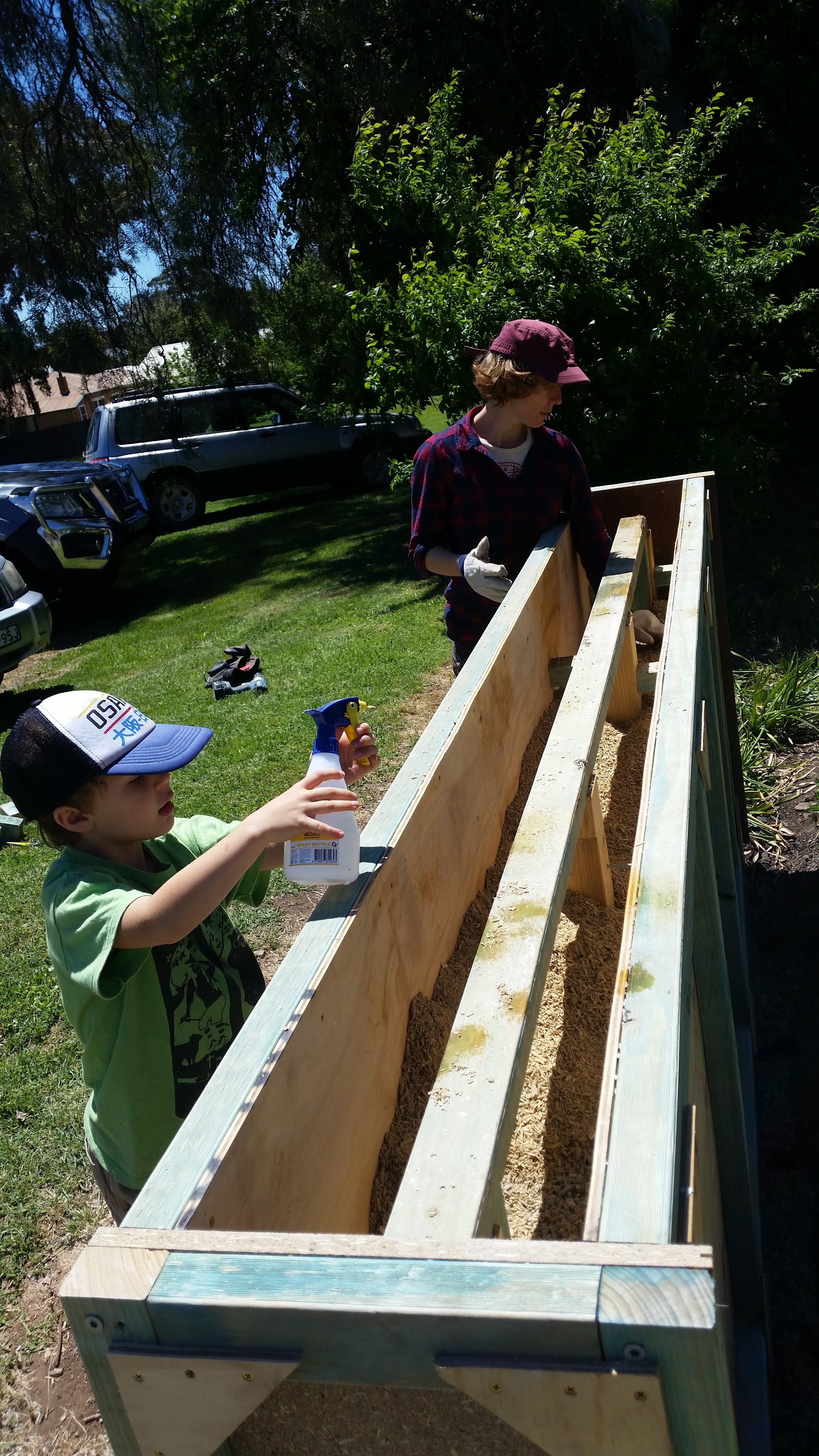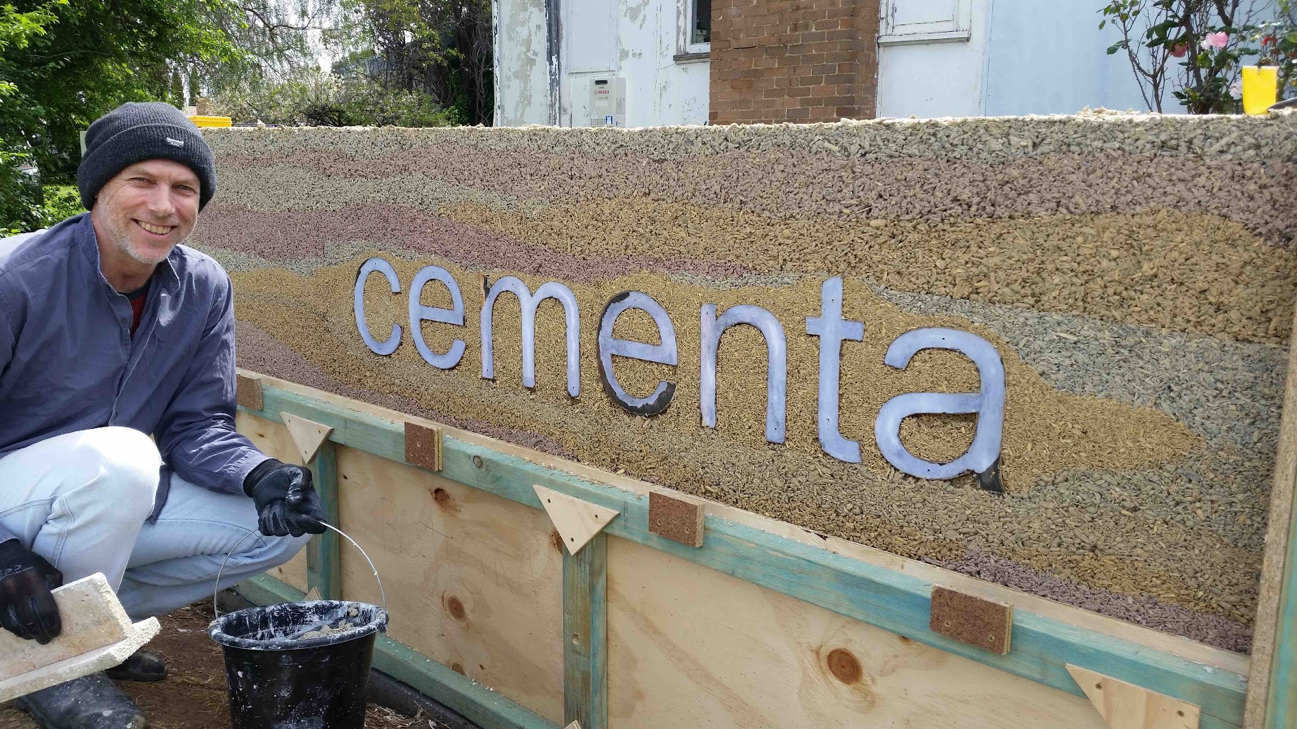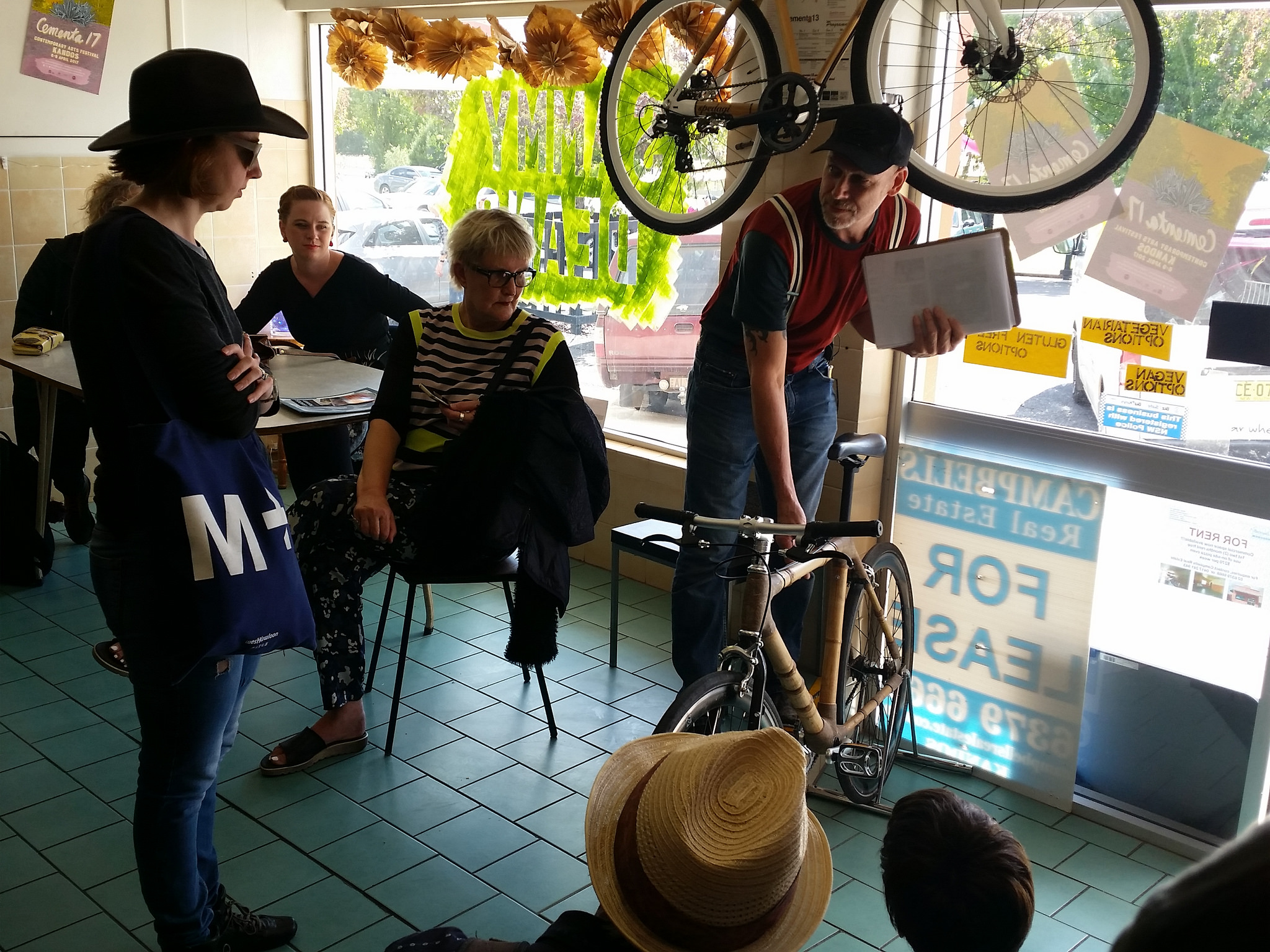The Hemp Initiative
This is a summary account of a project that began in early 2016, and is yet to be complete (in fact we mean for it to never end…).
Funnily enough, this project began with a bamboo bicycle. Gilbert Grace was keen to realise one of the fictional futures in Ian Milliss’ poster Welcome to Kandos, and envisaged a fleet of bamboo bicycles that could be available for Kandos residents and visitors. He built a prototype, which included some hemp twine in its construction. You can read about this stage of the project here.
Hemp and bamboo have much in common as a culturally misunderstood and maligned plants that boast a huge variety of sustainable applications. Gilbert began researching hemp as well, at the same time as KSCA members go to know farmer Stuart Andrews and began to talking about working with his land.
Stuart’s father Peter Andrews is famous for pioneering Natural Sequence Farming, a honed system of agriculture and land regeneration that was invented at Tarwyn Park very close to Kandos – in the Bylong Valley. Stuart is extending is father’s techniques and restoring Marloo, a highly degraded property outside Kandos. In 2016 he began to work with Gilbert Grace on the The Hemp Initiative, to explore the remarkable cultural history, and industrial and agricultural uses of the hemp plant. The set about applying for a license to grow a crop of hemp, and Gilbert did a hempcrete building course with the hemp industry pioneer and farmer Karla Maroszzeky, who then came on as a consultant with the project. We blogged about these first stages of the The Hemp Initiative here and here.
During Futurelands2, punters were also treated to a terrific excursion to Marloo to hear from Karla, Stuart and Gilbert (see the videos of their talks here and here).
Stuart Andrews at Marloo.
Gilbert introduces The Hemp Initiative at Marloo.
Klara Maroszzeky.
In the lead up to Cementa 17, Gilbert and some other KSCA folks had buckets of fun building with hempcrete. GIlbert had conceived of a ceremonial or “Commemorative Gate” for the town, and Terry Burrows very kindly offered his driveway on Angus Avenue to the project, which meant the wall was beautifully positioned at the beginning of the main street of Kandos.
Here’s Gilbert describing hempcrete:
“Hempcrete is made from a mixture of hemp hurds (the crushed inner stalk of the industrial hemp plant) and a lime binder. The damp mix is poured into formwork and lightly compressed. When fully cured it is breathable, water, rot and fire resistant. It has many advantages, approximately one sixth the weight of concrete, it is easy to handle and provides excellent thermal and sound insulation. Historically, hemp’s use as a filler for a lime based building predates cement and concrete. Even more interesting is that hempcrete is still very friable when first formed, so the lime binder absorbs carbon from the atmosphere and calcifies. In other words, the lime wants to return to the solid rock state of limestone. This process takes many years. This means that not only does hemp sequester carbon during its growth cycle, it continues to sequester carbon through this mineralisation process.
Various oxides were added to layers of hempcrete in the hempcrete wall, replicating the layered sedimentary rock seen in the Coomber Mellon Range beyond. The word ‘cementa’ was set in relief using precut ply blocks – according to Klara, this embedded lettering technique is a first in hempcrete construction.”
The “Ceremonial Gate” was then rendered in time for the work to be one of the exhibits at Cementa 17 (see Chloe Wolifson’s nice write-up here). It became a station for showing festival-goers a range of other hemp-based creations, including beautiful textiles by local weaver Kelly Leonard, home-made paper and some delectable hemp seed bread and cookies. We also took another full busload of interested folks out out to Marloo. This time Stuart Andrews showed them a different site to demonstrate how his Natural Sequence Farming rehabilitation work was progressing.
Cementa tour of at Marloo. Photo by Gus Armstrong
Hemp paper demo. Photo by Gus Armstrong
Kelly Leonard's hemp-fibre textiles
Dave Standfield prepares some hemp seed enriched loaves at the Rylstone bakery.
So where are we now with The Hemp Initiative?
This project has turned out to be more enlightening and timely than we first imagined! It faced considerable obstacles when Gilbert and Stuart were refused a license by the NSW Department of Industries to grow the planned crop in early 2017. This experience taught us a great deal about the extraordinary constraints that surround the hemp industry in Australia, constraints that reveal how much people continue to confuse low-THC industrial hemp with the smokable stuff. At one point the police even turned up to Marloo to have a chat! Meanwhile, Stuart had turned his attention to Forage Farms, a new family-run property in Queensland (where the Andrews family have embarked on a fantastic rotational grazing enterprise with chooks), and was understandably reticent to go through the rigmarole of reapplying for the license. Would KSCA ever see a hemp crop in the ground we wondered?
Fortunately, another landowner in the area who attended Futurelands2 was keen to trial hemp on their property, and approached us about the possibility of collaborating. A fresh license application was submitted… and accepted in November 2017! This news reached us just as it was announced that human consumption of food-grade hemp was finally legal in Australia (as the only country in the world, with NZ, in which hemp food products were prohibited, it was about bloody time). As we got down to the nitty gritty of soil preparation, irrigation and the like for a small trial crop of food grade seed hemp, the mediasphere was awash with stories that medicinal cannabis can now be imported to, and exported from, Australia. Yes, you heard right: Federal Minister for Health Greg Hunt’s words were: "We would like to be, potentially, the world's number one medicinal cannabis supplier".
These breakthroughs have special significance for Klara Marosszeky, Managing Director of Australian Hemp Masonry, and President of the Australian Industrial Hemp Alliance. Klara has been an indefatigable, optimistic advocate for the industry for a very long time. We are immensely fortunate to have had Klara’s support and expert advice over the course of The Hemp Initiative.
So in 2018 The Hemp Initiative strode stoically on, just as the fortunes of the Australian Hemp industry have turned. But there is now a new obstacle: the drought. The realities of farming in Australia hit hard. As the land owner committed to growing the crop needs to prioritise watering their animals, it hasn’t made sense to plant a crop (that would need to be irrigated). The hemp seed is in the fridge, the ground has been ripped and prepared with rich compost, all we need is some rain to fall and we’ll be off!




